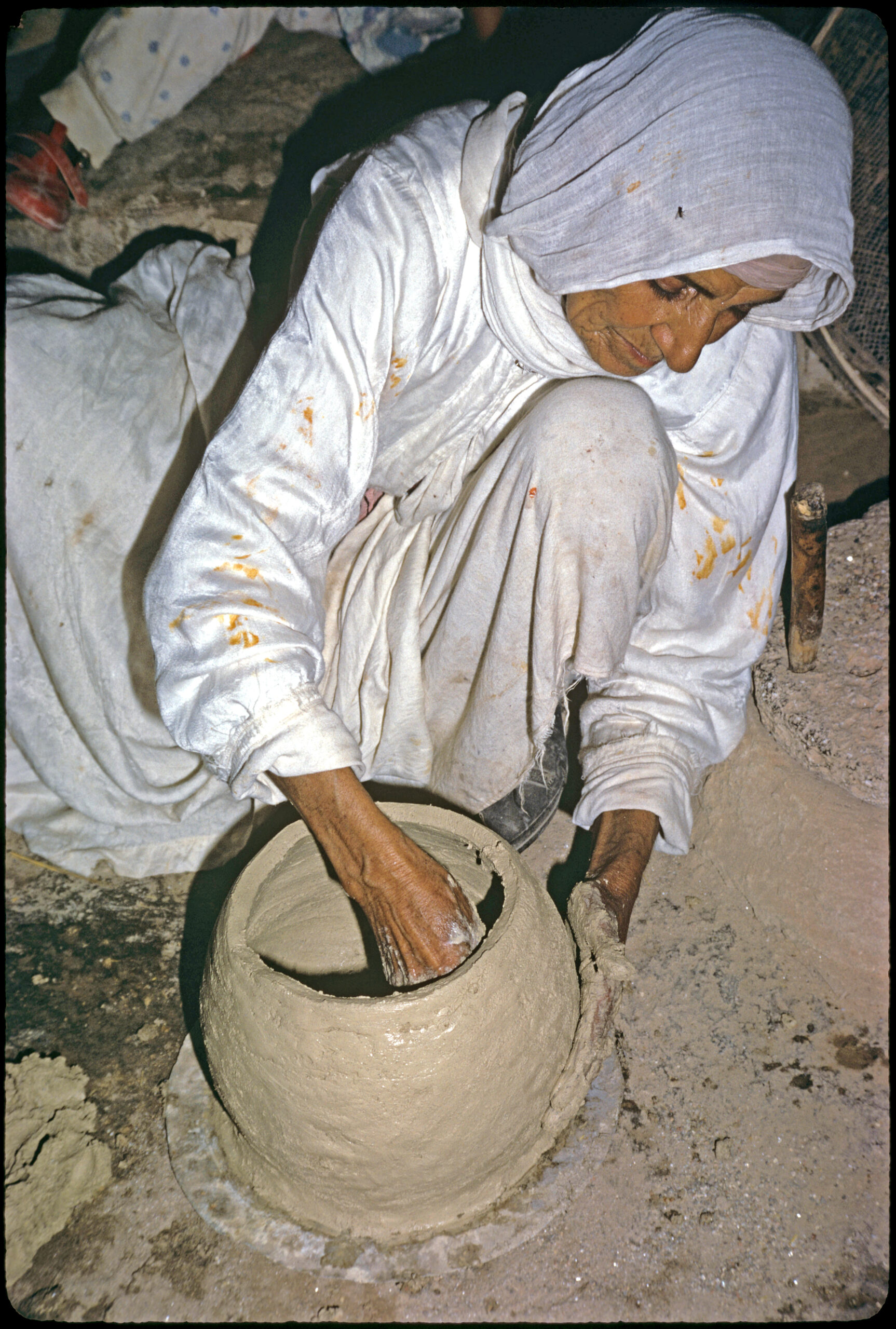The archaeologist, the prehistorian even more, is concerned with understanding how the material he discovers in his excavations was made.
With its composition of pastes, its modelling techniques and its firing methods, traditional Palestinian pottery offers a useful contribution to archaeological research. This craft, now lost, was studied and photographed in the 1970s by Owen Rye and the late John Landgraf. The School recently published their results in the Cahiers de la Revue Biblique.
In rural workshops, men produced objects to be sold on a potter’s wheel. They used very elaborate techniques, transmitted and perfected over the centuries by generations of craftsmen. However, in the villages of the Palestinian mountains, a lively tradition of women potters continued up until 1980, but then abruptly ceased with the consumer society.
They made all the domestic dishes by hand, from the coil without the wheel, and fired them without a closed kiln. Their skill and techniques were exactly those of 5500 years ago. However, this pottery appeared in Palestine in the 14th century with the nomads forced by the Mamelukes to settle down. By tradition, they did not make pottery. The women would have reinvented the oldest technol-ogy that was then maintained till the twentieth century. The study is fundamental to understand primitive pottery.
